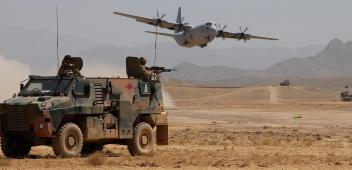A focused force: Australia defence priorities in the Asian Century
Hugh White calls for Australia to abandon the 'Balanced Force' concept and refocus its military on managing strategic risks related to the rise of China.

- Australia’s changing security environment, dominated by the rise of China, requires Canberra’s military planners to move away from the idea of a ‘balanced force’.
- Australia should instead develop a ‘focused force’ to operate in Australia’s maritime approaches
- This force should include 18 submarines and more than 100 – perhaps even 200 - fifth-generation combat aircraft
Executive Summary
The Paper can be downloaded here.
The biggest questions for Australia’s defence white paper concern China. How does China's rise affect Australia's strategic situation and what does it mean for our defence needs?
Just as Australia's strategic outlook has been dominated in past decades by American primacy in Asia, so in future it will be shaped more than anything else by what follows as America's primacy fades and China's grows. The biggest risk is not that China becomes a direct threat to Australia but that the erosion of American power unleashes strategic competition among Asia's strongest states, which in turn increases the risk that Australia could face a number of military threats to its interests, even its territorial security.
The blunt truth is that our existing and planned forces will not be able to achieve the strategic objectives set for them over the past decade, let alone any wider objectives that may be set in future.
To provide future Australian governments with genuine military options to protect Australia's strategic interests if Asia becomes more contested, our defence planning needs to focus on the capabilities that provide those options most cost-effectively.
At sea, we should invest in a much bigger fleet of submarines, which are most cost-effective for maritime denial, and stop building highly vulnerable and extremely expensive surface ships for which there is no clear strategic purpose. In the air we need to ensure a robust air combat and strike capacity against the kinds of forces that major-power adversaries will have in the 2020s and '30s. That means aircraft at least as capable as the joint strike fighter, and many more of them than planned at present.
To build a focused force to achieve Australia's long-term strategic objectives as they are now defined would need spending 2.5 per cent of GDP or more.
Photo by Flickr user US Pacific Fleet.



